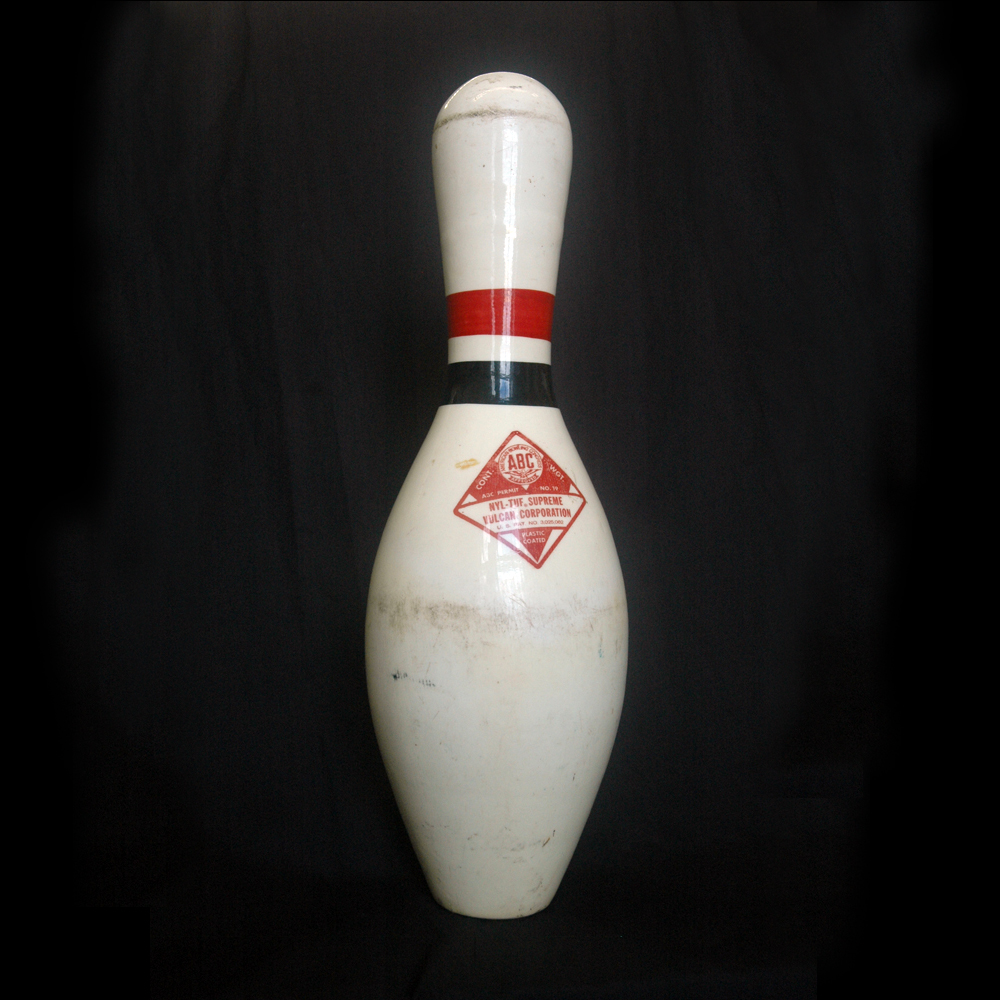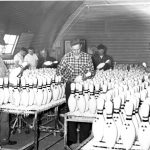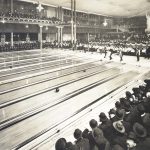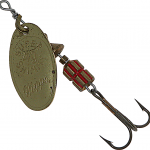
This bowling pin was produced by the Vulcan Corporation in Antigo, Wisconsin, sometime in the late 1950s after Vulcan had introduced its patented “Nyl-Tuf Supreme” plastic coating (as indicated by the pin’s red label). The pin complies with American Bowling Congress (ABC) standards, and is currently owned by the Langlade County Historical Society.
The Vulcan Corporation initially manufactured wooden shoe lasts and chose Antigo as its headquarters because of the region’s robust lumber industry and plentiful supply of large maple trees.
When demand for shoe lasts waned, Vulcan branched out into various other wood products. Beginning in 1953, the company became a major producer of bowling pins, although shoe last production continued up to 1965 in Antigo, and longer at other plants around the country. About 20% of all bowling lanes in the U.S. used pins manufactured by Vulcan. Bowling pins have always been made exclusively of sugar maple, as specified by the American Bowling Congress, based in Milwaukee from 1905 to 2008. Vulcan used trees from within a 60-mile radius of Antigo. During the 1960s and 1970s, Vulcan also supplied pins for a major bowling boom in Japan.
In 1967, Vulcan employed about 100 men in Antigo. In 1970, Vulcan relocated its head offices to Cincinnati, Ohio, and was the second largest bowling pin manufacturer in the U.S. Boasting 36 plants nation-wide, and producing 21,000 pins weekly, the company at that time also planned to increase production by an additional 4,800 pins per week.
Listen below to the segment on Wisconsin Public Radio’s Wisconsin Life.
Written by Joe Hermolin, February 2016.
Object courtesy of the Langlade County Historical Society.






